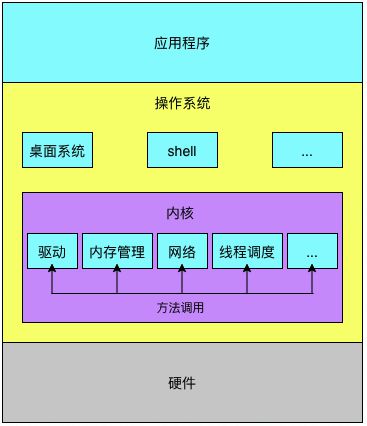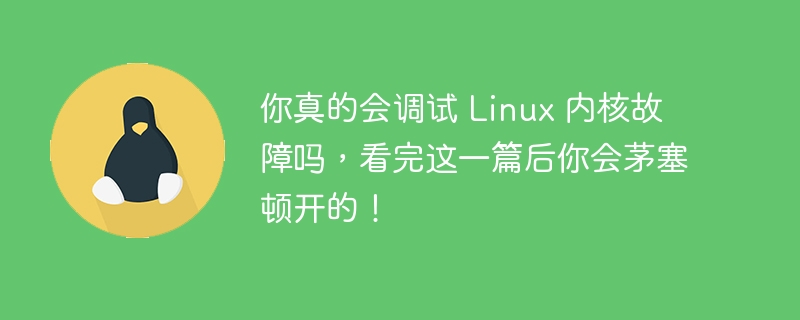Dear readers, hello! Here, I am honored to share with you the valuable experience and skills I have accumulated as a senior network engineer with my professional skills in the development and optimization of the Linux kernel TCP protocol stack. I believe that through this article, we can learn from each other and discuss it, and bring practical and useful reference materials to you who have a strong interest in this field or are currently working on it.
1. TCP connection establishment
TCP connection establishment is a key transaction of the TCP protocol stack, but it is not uncommon to face many connection problems. After careful consideration and detailed debugging, I discovered some common and practical problems and their solutions, including examples of preventing SYN flooding attacks (by adjusting system parameters) and dealing with network congestion (that is, using TCP Fast Open technology). .
2. Data transmission and flow control
Dear readers, hello! In fact, the main responsibility of the TCP protocol stack is to ensure efficient and stable transmission of data and to effectively control traffic to prevent network congestion. In order to further improve performance and enhance traffic control effects, we have adopted several important strategies. For example, by adjusting the TCP window size in a timely manner and using good congestion control algorithms, transmission efficiency can be significantly improved; and by introducing efficient hardware technology arm linux such as the TCP/IP offload engine, performance leaps can also be achieved.
3. Congestion control and packet loss recovery
Congestion control is very important to maintain smooth operation and fairness of the network. In my daily practical exploration, I have come across many problems and problems about congestion control algorithms. By deeply exploring the Linux kernel TCP protocol stack, I found new ways to improve these algorithms. For example, using a control scheme based on network status can more accurately record the actual network status; a fast recovery strategy can effectively reduce adverse reactions caused by packet loss.
4. Timeout retransmission and delay optimization
Timeout retransmission is one of the important links in the TCP protocol stack, and delay is a key indicator of user satisfaction. In actual application scenarios, we often encounter situations where timeout retransmission does not meet expectations and the delay is too high. Through in-depth analysis of the code and debugging data, we have summarized the following solutions - for example, appropriately adjusting timeout settings and retransmission strategies can improve the success rate; or using technologies such as the TCP_NODELAY option to reduce delays and thereby improve user experience.
5. TCP/IP protocol stack and hardware acceleration
Thanks to the rapid advancement of hardware technology, network functions are increasingly implemented by hardware. As a practitioner in this fieldlinux kernel tcp protocol stack, I am actively involved in the research and development of TCP/IP protocol stack and hardware acceleration technology. We successfully migrated some protocol stack functions to hardware devices such as network cards, which greatly improved the operating efficiency and throughput of the system. Although we encountered problems such as compatibility and adaptability during the process, we firmly believe that through unremitting efforts and debugging, we will be able to find an ideal solution.

6. Debugging and optimization of TCP/IP protocol stack
Debugging and optimization are important links in the daily work of network engineers. During the practice, I have accumulated rich debugging and optimization skills. For example, with the help of packet capture tools and network analysis instruments, the source of the fault can be quickly identified; using performance analysis tools and debuggers is helpful for in-depth analysis of the code and excavating performance bottlenecks.
7. Security of TCP/IP protocol stack
Facing the increasingly serious trend of network attacks, it is crucial to ensure the security of the TCP/IP protocol stack. During the actual operation, I studied some key technologies and strategies about security in a targeted manner. For example, we can use the security extension function of the TCP/IP protocol stack to effectively resist DDoS attacks; or we can greatly enhance the confidentiality and integrity of data by using advanced encryption technologies such as TLS/SSL.
8. Compatibility and standardization of TCP/IP protocol stack
As we all know, the TCP/IP protocol stack is one of the foundations of the Internet, and its compatibility is crucial to other network devices and protocols. During this process, I was fortunate to participate in a series of compatibility tests and standardization work. Through in-depth debugging and repeated testing, the TCP/IP protocol stack was able to cope with various complex network environments and maintain its stability.

9. Future development of TCP/IP protocol stack
With the rapid development of cutting-edge technologies such as cloud computing and the Internet of Things, the TCP/IP protocol stack is facing new challenges and opportunities. As practitioners in the professional field, we observe and think deeply about these cutting-edge technologies and their impact. Using advanced protocols such as IPv6, we can better cope with the increasing number of devices and large-scale networks; as for the technology of network function virtualization, it provides us with a more flexible and effective network layout solution. Both will make us more confident when facing the future network environment.
10. Summary and Outlook
After years of practice and research, I have a deep understanding and rich experience in Linux TCP topology. In my future career, I will continue to pay attention to and invest in research and innovation in related fields, and strive to optimize the path to improve network stability and performance.
Herelinux kernel tcp protocol stack, I would like to share with you my valuable experience in the field of Linux kernel TCP protocol stack, and hope to provide you with some inspiration and help. Thank you all for reading this far!
The above is the detailed content of Secret tips for Linux kernel TCP protocol stack optimization revealed. For more information, please follow other related articles on the PHP Chinese website!
 探秘Linux内核功能:五大部分的详细介绍Mar 21, 2024 am 09:57 AM
探秘Linux内核功能:五大部分的详细介绍Mar 21, 2024 am 09:57 AMLinux内核作为操作系统的核心部分,承担着管理硬件资源、提供系统调用等重要功能。本文将深入探讨Linux内核的五大部分,包括进程管理、文件系统、网络通信、设备驱动和内存管理,并提供详细的介绍和代码示例。一、进程管理进程的创建在Linux内核中,进程的创建通过fork()系统调用来实现。下面是一个简单的示例代码:#include
 Linux内核TCP协议栈优化的秘密技巧揭示Jan 28, 2024 am 09:39 AM
Linux内核TCP协议栈优化的秘密技巧揭示Jan 28, 2024 am 09:39 AM尊敬的读者们,您好!在此,我有幸与您分享我作为资深网络工程师,以其专业的技术在Linux内核TCP协议栈的研发及优化工作中所积累下的宝贵经验与技巧。相信通过此文,我们能互相学习、探讨,为对该领域有着浓厚兴趣或正在进行相关工作的你们带来实际且有益的参考资料。1.TCP连接建立TCP连接建立乃是TCP协议栈关键事务,然而面临诸多连接问题并不少见。经过深思熟虑及详细调试,我挖掘出一些普遍存在且实用的问题及其解决方案,包括防范SYN洪泛攻击(可透过调整系统参数)及应对网络拥塞(亦即运用TCPFastOp
 实战 | RISC-V Linux入口地址2M预留内存优化Aug 01, 2023 pm 03:37 PM
实战 | RISC-V Linux入口地址2M预留内存优化Aug 01, 2023 pm 03:37 PM上篇分析了RISC-V Linux启动的页表创建,提到RISC-V Linux入口地址必须2M对齐,今天讲讲如何解决2M对齐的问题,或者说如何优化部分内存。
 非MMU的支持是由Linux内核的uClinux移植提供的吗?Jan 26, 2024 pm 05:18 PM
非MMU的支持是由Linux内核的uClinux移植提供的吗?Jan 26, 2024 pm 05:18 PM篇幅长,技术内容多,点击关注不走散。序言:了解Linux内核一个计算机系统是一个硬件和软件的共生体,它们相互依赖,不可分割。计算机的硬件linux内核移植步骤,富含外围设备、处理器、内存、硬盘和其他的电子设备组成计算机的缸体。并且没有软件来操作和控制它,自身是不能工作的。完成这个控制工作的软件就称为操作系统,在Linux的术语中被称为“内核”,也可以称为“核心”。Linux内核的主要模块(或组件)分以下几个部份:储存管理、CPU和进程管理、文件系统、设备管理和驱动、网络通讯linux论坛,以及系
 深入探索Linux内核源代码分布Mar 15, 2024 am 10:21 AM
深入探索Linux内核源代码分布Mar 15, 2024 am 10:21 AM这是一个深度探索Linux内核源代码分布的关于1500字的文章。因为篇幅有限,我们将重点介绍Linux内核源代码的组织结构,并提供一些具体的代码示例,以帮助读者更好地理解。Linux内核是一个开源的操作系统内核,其源代码托管在GitHub上。整个Linux内核源代码分布非常庞大,包含了几十万行代码,涉及到多个不同的子系统和模块。要深入了解Linux内核源代码
 探讨安卓系统与Linux内核之间的关系Mar 14, 2024 pm 12:48 PM
探讨安卓系统与Linux内核之间的关系Mar 14, 2024 pm 12:48 PM安卓系统与Linux内核是息息相关的两个实体,它们之间的关系紧密而又复杂。在安卓系统中,Linux内核充当着重要的角色,为安卓系统提供了底层的硬件驱动和系统调用支持。本文将探讨安卓系统与Linux内核之间的关系,以及它们是如何交互、协同工作的,同时提供一些具体的代码示例。安卓系统是基于Linux内核开发的移动操作系统,主要用于智能手机、平板电脑等移动设备。L
 Linux内核:揭秘计算机操作系统的隐形大BOSSMar 24, 2024 am 09:10 AM
Linux内核:揭秘计算机操作系统的隐形大BOSSMar 24, 2024 am 09:10 AM论述了Linux内核在计算机操作系统中发挥重要作用的观点linux内核设计和实现,通过深入解析Linux内核设计及实际应用,揭示了它在该领域的显著地位和影响力量。1.优化的内存管理通过采用虚拟内存管理技术,Linux内核能高效率地完成内存分配与回收。在置换页面算法帮助下linux内核设计和实现,精确处理物理内存至虚拟内存之间的映射关系。依据应用程序具体需求,实现可动调整,从而提升了整个系统性能表现。2.强大的进程管理内核借助其卓越的多任务处理技术,使多个进程能够和谐共处于单一系统中。精心制定的进
 你真的会调试 Linux 内核故障吗,看完这一篇后你会茅塞顿开的!Aug 03, 2023 pm 04:50 PM
你真的会调试 Linux 内核故障吗,看完这一篇后你会茅塞顿开的!Aug 03, 2023 pm 04:50 PMLinux内核是操作系统的核心,它控制对系统资源(例如:CPU、I/O设备、物理内存和文件系统)的访问。在引导过程中以及系统运行时,内核会将各种消息写入内核环形缓冲区。这些消息包括有关系统操作的各种信息。


Hot AI Tools

Undresser.AI Undress
AI-powered app for creating realistic nude photos

AI Clothes Remover
Online AI tool for removing clothes from photos.

Undress AI Tool
Undress images for free

Clothoff.io
AI clothes remover

AI Hentai Generator
Generate AI Hentai for free.

Hot Article

Hot Tools

ZendStudio 13.5.1 Mac
Powerful PHP integrated development environment

MinGW - Minimalist GNU for Windows
This project is in the process of being migrated to osdn.net/projects/mingw, you can continue to follow us there. MinGW: A native Windows port of the GNU Compiler Collection (GCC), freely distributable import libraries and header files for building native Windows applications; includes extensions to the MSVC runtime to support C99 functionality. All MinGW software can run on 64-bit Windows platforms.

Notepad++7.3.1
Easy-to-use and free code editor

VSCode Windows 64-bit Download
A free and powerful IDE editor launched by Microsoft

SAP NetWeaver Server Adapter for Eclipse
Integrate Eclipse with SAP NetWeaver application server.





